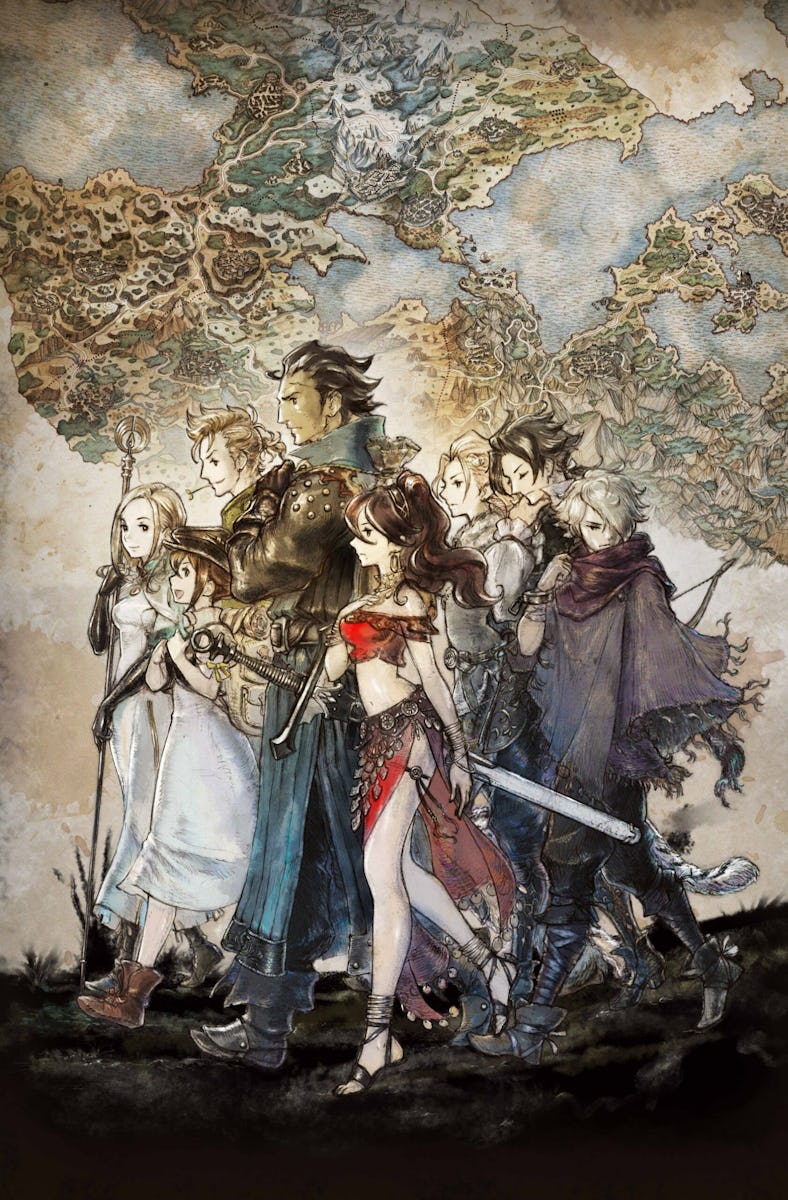Square Enix’s Most Nostalgic Game Is Also Its Most Innovative
A modern classic.

Nostalgia is a hell of a thing, especially when it comes to video games. Square Enix RPGs from the ‘90s hold some of the greatest nostalgia for fans, and titles like Final Fantasy VI, Chrono Trigger, and Xenogears continue to live rent-free in gamers' heads as some of the best ever released. So how could any modern game live up to that nostalgia?
Square Enix itself faced this problem head-on in 2018 and found that the best option isn’t to fight nostalgia but embrace it. The result is Octopath Traveler, released five years ago on July 13, 2018 for Nintendo Switch. This nostalgia-fueled RPG manages to replicate what made ‘90s RPGs great while subtly evolving the decades-old formula in a modern way.
The HD-2D style of Octopath Traveler creates a feeling of nostalgia while looking better than any game that inspired it.
Visuals are always the first thing that strikes the player, and Octopath Traveler is no exception. Octopath Traveler represents the stunning debut of what Square Enix has dubbed its HD-2D art style. The game has pixelated art akin to what would be seen on the NES, but the game world is rendered in a 3D space.
The definition of every pixel is sharp and vibrant. Pixelated characters stand beside gorgeously rendered landscapes that give the game a feeling of depth and clarity ‘90s RPGs could only dream of. Octopath Traveler recreates the rose-colored memories of games' past in a way that only modern technology could.
The second half of the nostalgic formula Octopath Traveler seeks to emulate is combat. Nineties RPGs are known for being the golden age of turn-based combat, with Final Fantasy’s Active Time Battle system acting as the example of a perfect combat system. But much like Octopath Traveler’s visuals, the game’s combat does not seek to recreate its inspiration exactly — rather it melds old with new in hopes of creating a true evolution.
The break system is a challenging and exciting evolution of classic turn-based RPG combat.
Combat revolves around the Break system. Enemies have elemental weaknesses and by targeting those weaknesses you can break them, leaving them stunned for a round of combat. Tougher enemies take more attacks on their targeted weaknesses to break, which is where the second unique part of Octopath Traveler’s combat comes in the boost system. Players have boost points, which increase by one per round of combat. Using your boost points allows for stronger attacks that can break enemies faster.
The interplay of the break and boost systems makes Octopath Traveler’s combat a give-and-take of measured decisions. Should you wait another round to gain more boost points, is now the time to burn those boost points, can you break the enemy's shield in time to stop their powerful attack? Every aspect of combat becomes a decision weighed down with consequences. Everything you do matters. It makes Octopath Traveler’s combat feel fast-paced and full of risk. Just like its graphics, the combat iterates on its 90s inspirations to create something uniquely itself.
The art style and combat systems of Octopath Traveler allow for a traditional RPG story of characters banding together to fight an all-powerful evil. In its characters and overarching narrative, Octopath Traveler is at its most tropey, relying on the same story beats of the games that inspired it. But this isn’t a bad thing. While it is the game at its most openly nostalgic, it is balanced out by everything around it that constantly innovates. Octopath Traveler is something old and something new, and one of the best RPGs of the past decade.